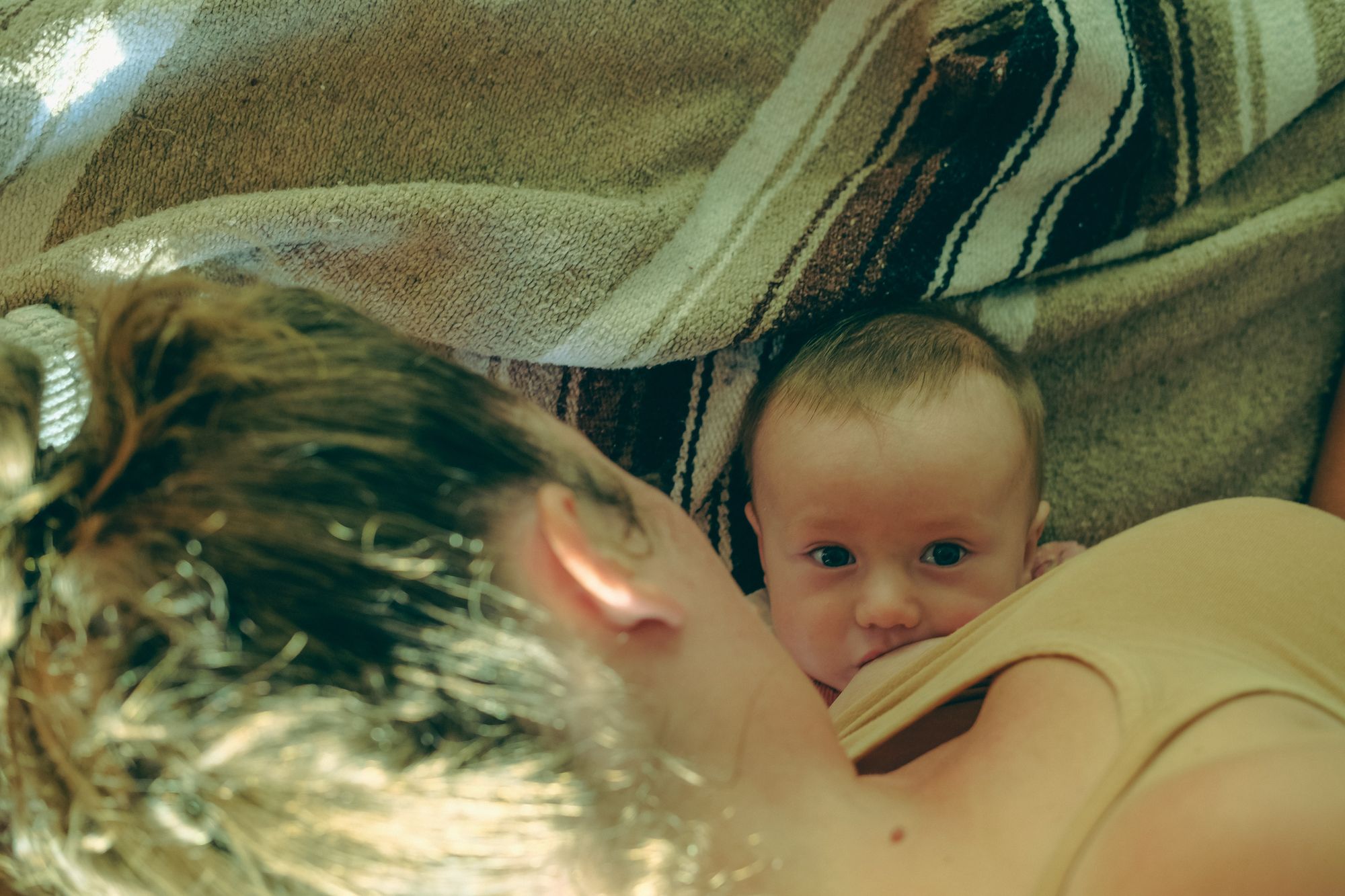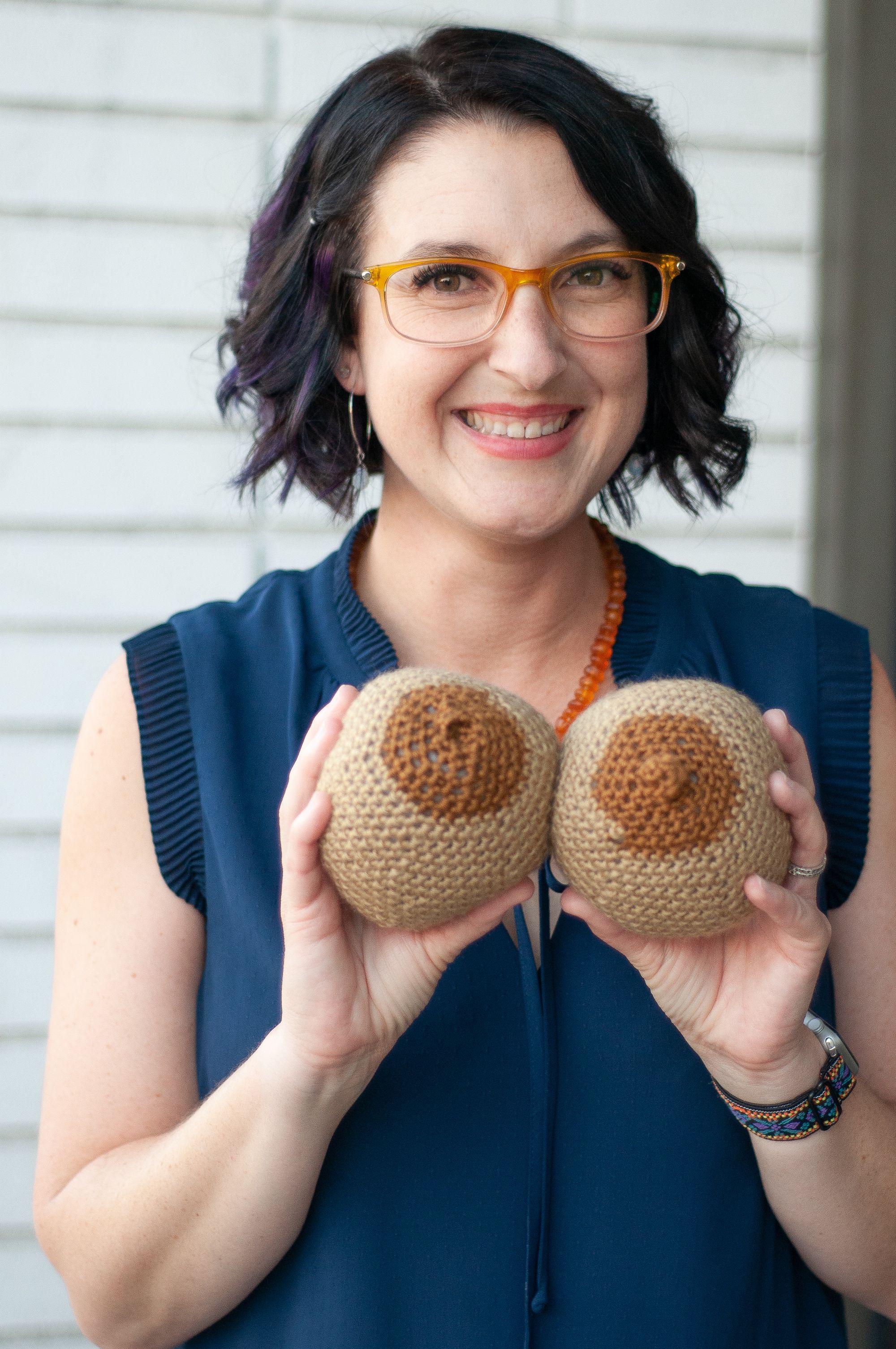How to position your baby for the most productive feedings
Lactation 101 - Learning with Holly: Positioning
As a postpartum nurse for nearly 18 years, there’s one common theme that I noticed the most: almost everyone prepares for the birth of their baby, but not as many prepare for feeding their baby or parenting.
So! Let’s start at the very beginning.
Congratulations! Your baby is born and in your arms. What a glorious feeling as you have the rush of adrenaline and the powerful surge of love as you look into the eyes of your little one for the first time.
Ideally, you had the opportunity to hold your baby skin to skin until the first feeding. This is called The Golden Hour and is magical in so many ways. After your baby rests on your chest for a little while, they will then be ready to try a feeding.
It’s finally time for that first feeding! …. Now what? Where do you put your arms? Where does the baby go? How do you even hold your baby?!
The first thing is to remember that your baby is really just like you and me when it comes to eating and drinking. And the first thing to focus on is positioning. The very best positioning creates the very best latch. The very best latch prevents sore nipples! That makes a win-win situation for everyone!
Positioning your baby for latching is the very same as how we take a drink from an open cup. Think about it! Do you hold the cup to your shoulder and twist your neck to get a sip? Even if you are able to get something in your mouth, like with a straw, can you swallow comfortably? The answers are no. Instead, we typically keep our bodies in a straight line and lift our chin before swallowing comfortably.
That’s exactly what your baby needs! Their body needs to be in a straight line: from ear to shoulder to hip. That also means they are belly-to-belly with you. Your baby’s chin should be lifted off their chest and buried into your breast/chest, not tucked in to their own chest. This position ensures the nose is clear, so their nose isn’t blocked, it helps the mouth to open wide for a good, deep latch, and it opens the throat so a swallow can easily happen. This is true for any latching hold.
For you, there are many positions that can be used. The most commons ones I teach with a newborn who is a few hours or a few days old are the cross cradle, football, and laid back. All of these positions give you support and control to guide your baby for the best latch.
Cross Cradle
Cross cradle tends to be my first go-to. If your baby is latching on the left side, then you would hold them in your right arm at breast/chest level, using pillows or whatever is needed. Your elbow is at their bum, forearm on their back, your palm at their shoulders, thumb near one ear and middle finger at the other ear. Think about your hand as a support at the top of the neck rather than cupping the top of their head. This makes a HUGE different with latching. It allows your baby to lift their chin and you gently pull them forward rather than pushing the chin down. Begin by aiming the baby’s nose at the nipple so they open their mouth wide when getting ready to latch.
Football Hold
Football hold is also a great starting position. This one is so good for the parents who had a cesarean delivery and want to keep pressure off the incision, larger breasted/chested parents, large or small babies, or premature babies. All the same ideas are there as with the cross cradle hold. Use pillows or other helpful tools to bring the baby to breast/chest height. Roll the baby on their side so they are in alignment. Parents elbow is at the baby’s bum, forearm on the back, palm at the shoulders, thumb near one ear, middle finger at the other. Nose aimed at the nipple.

Laid Back
Laid back is my one of my favorites because it can be so comfortable for the parent! It takes the pressure off the bottom or the belly. The baby can be across the parent’s belly like horizontally or more vertically. Alignment for the baby is always the number one thought with all positioning. Look for their body to be in a straight line. This positioning is also called biological nurturing or natural breastfeeding hold. Here the parent can either hold their arms/hands like in the cross cradle hold or more traditionally like in a cradle hold. I also guide parents to this position later in a lactation journey, especially when the parent has a fast flow because gravity will slow it down.
Side Lying
Side lying. Ohmygosh! I only WISH I would have figured this one out with my first baby! It’s such a lovely one, especially when the parent is tired but the baby is awake and doing all the work. All the same elements exist of keeping the baby’s body in a straight line, but it includes safety measures like keeping the pillow and blankets away from the baby.

Traditional Cradle Hold
Traditional cradle hold is more of an advanced hold and one I usually start to talk about when a baby is about 1-2 weeks old and is really figuring out their part of feeding. In the early hours and days, I do see this position leading to more shallow latching and sore nipples, often from not-so-great positioning. So, remember that even this most common hold, all the major elements need to be there: baby’s body in a straight line, no twisted neck, and line the baby up with their nose at the nipple, not mouth to nipple, so they get a deep latch and can breathe easily.
As you position your baby, whether in the Cross-Cradle Position, Football Hold, Laidback, Side Lying or Traditional Cradle Hold remember to keep your baby aligned, and bring your baby's nose to nipple then back away by an inch so they can lift their mouth up and over, so that in the end, the only thing your baby has to say is, "Got Milk?"

Hi! I'm Holly, and I consider it a privilege to help you with your sweet baby. I've been a registered nurse since 2005 and an internationally board certified lactation consultant since 2017. I was already working as a postpartum nurse when I had my first baby, so I thought I was prepared and knew all about breastfeeding. Boy was I wrong! Instead of the natural delivery I had planned, I had an emergent cesarean delivery 2 days after her due date. We both felt miserable and like we went through all the challenges and concerns: she lost > 10% in the hospital, had difficulty latching, had to supplement with formula, figure out a nipple shield, and learn to use a pump. When my second baby came, I did feel more prepared for latching. I was able to have a vaginal delivery with her, but then she was in the NICU for a few days. I used the hospital breast pump until she was able to coordinate latching and breathing at the same time. But then she lost too much weight, had high jaundice and was in an incubator, which made it hard to bond with her. Eventually we got the hang of nursing, but not without the ups and downs to get there. I wish I could send the "me of now" back to the "me of then" so I could've helped myself have a better experience. Since I can't do that, I pay it forward to be able to help others.
I often say that my soapbox slogan is "Protect the Nipples All The Time!" When I’m not out and about helping families, I can be found working on a creative project at home, camping, traveling with my husband and kids with a goal of an international trip once a year, or planning our next adventure.
Thank you for letting me be a part of your journey.
March 22, 2023 - Holly Hill BSN, RN, IBCLC
Connect with Holly on Instagram @light_up_lactation
or via Email holly@breezybabies.com
For additional resources, check out Birth Made Mindful's Fourth Trimester Course on feeding and the postpartum period.


